For professional traders, it offers hidden orders to prevent MEV attacks; for retail investors, it allows one-click opening of 1001x leverage to chase the Meme coin wave—Aster meets the needs of two completely different worlds through a single codebase. This innovative dual-mode design and a series of product developments and positioning have allowed it to stand out in the fierce competition of decentralized derivatives platforms, rapidly rising to become a significant player that cannot be ignored.
Strong Entry into the Forefront of the Perp DEX Track
Perpetual DEX has become the fastest-growing and most promising track in the DeFi market. Compared to traditional spot DEX, Perp DEX allows users to execute long and short operations with leverage, providing a trading experience similar to centralized exchanges (CEX), while also retaining the main advantages of decentralization: permissionless, censorship-resistant, non-custodial, and no KYC (Know Your Customer)/AML (Anti-Money Laundering) requirements.
As of September 2025, the average monthly trading volume of Perp DEX has reached $333.4 billion, and the DEX/CEX futures trading volume ratio has risen to nearly 10%, driven by users' strong demand for efficient, transparent, and secure on-chain Perp trading.


However, this track still faces some inherent challenges, such as fragmented liquidity, poor user experience, and protocol performance constrained by underlying public chains. Against this backdrop, Aster has attracted market attention with its unique solutions.
Aster provides both Perp and spot trading, aiming to create a one-stop on-chain trading platform for global cryptocurrency traders. Its product philosophy is reflected in a deep insight into user groups, meeting the needs of two types of users through a single technical architecture, pioneering a new path in the DEX track.
Perpetual is the hunting ground for professional players, focusing more on professional traders, quantitative institutions, and API users. It adopts a centralized limit order book (CLOB) mechanism similar to mainstream CEX, bringing deep liquidity and minimizing slippage, especially for trading mainstream pairs like BTC/USDT.
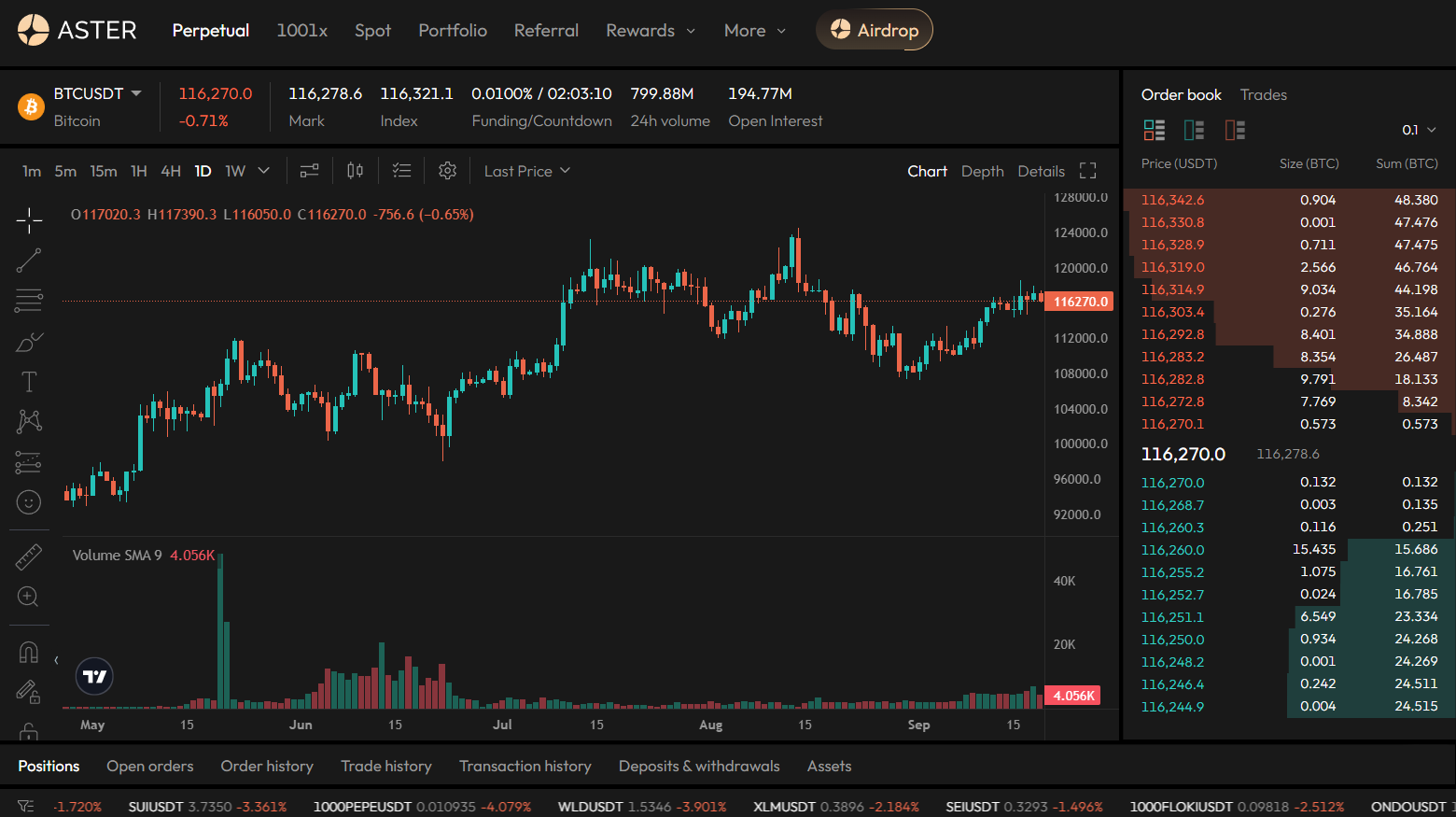
For high-frequency traders, Aster also offers API access, automated grid trading, and other advanced tools. Notably, Aster has fully integrated its "privacy-first" principle into the product development process, developing the "Hidden Orders" feature to assist traders in executing large orders without exposing their strategies, effectively preventing on-chain front-running and MEV attacks. This feature provides professional players with trading protection similar to that of CEX in a highly transparent on-chain environment.
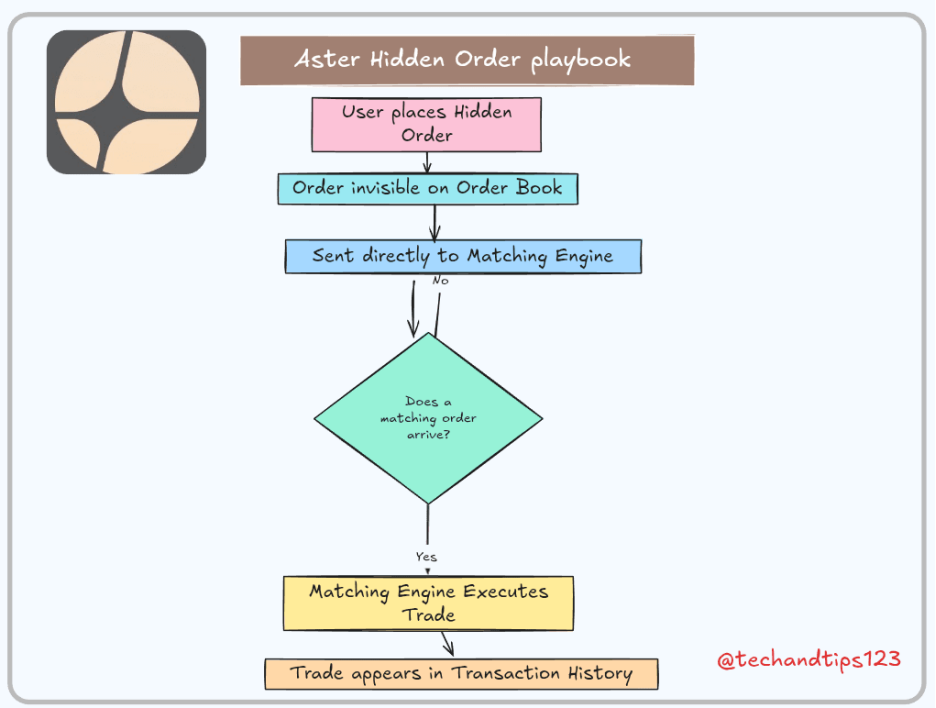
In contrast to Perpetual, the 1001x model is akin to a public amusement park, dedicated to serving a broader retail audience. This model is based on the ALP (Aster Liquidity Pool) liquidity pool, enabling a seamless experience of one-click trading without the need for pre-deposits. Additionally, it offers up to 1001x leverage in "Degen mode," suitable for trading scenarios that pursue rapid position building and high-risk returns, such as immediately participating in bets during a Meme coin surge.

Aster's dual-mode design effectively addresses the long-standing dilemma of user growth in Perp DEX. Traditional Perp DEXs often have to choose one type of user group, such as dYdX focusing on professional users, while GMX is more focused on retail users. Aster has built a user retention loop by integrating both modes: 1001x attracts new users with a low barrier to entry, and once their trading skills mature, they can seamlessly switch to Perpetual. This design not only significantly optimizes the user experience but also reflects the project's deep understanding of the increasingly diverse DeFi user profile.

Can Aster Become the Next Hyperliquid?
On the battlefield of Perp DEX, Hyperliquid has become a leader by insisting on performance, with its secret lying in the "sovereign L1" strategy. Hyperliquid chose to build an L1 from scratch using the HyperBFT consensus mechanism, achieving a TPS (Transactions Per Second) of up to 200,000, enabling sub-second transaction confirmations.
Hyperliquid's "vertical integration" model achieves a highly transparent on-chain order book by controlling the entire technology stack from consensus to order book, allowing every order, cancellation, execution, and settlement to be publicly verifiable.
As Sun Tzu's Art of War states, a good warrior seeks advantage from the situation; Aster's strategy demonstrates the wisdom of leveraging existing strengths, fully aware that building a new L1 and persuading users to migrate is quite challenging. Therefore, Aster has adopted a clever strategy known as the "Trojan Horse," choosing to start within the BNB Chain ecosystem, which has a large user base and deep liquidity.
This choice has given Aster a significant GTM (Go-To-Market) advantage: first, it can immediately gain traffic support without undergoing the difficult user cold start; second, by collaborating with leading protocols in the BNB Chain ecosystem, such as PancakeSwap and SafePal, Aster quickly established brand trust and distribution channels. For example, its liquid staking token asBNB and native stablecoin USDF directly utilize the existing infrastructure of BNB Chain. Aster has significantly reduced the difficulties of its initial construction by "borrowing" from existing strengths.
On July 31, Aster announced the launch of a privacy-first high-performance ZK L1—Aster Chain, revealing its hidden strategic route: BNB Chain is actually a transitional "incubation platform," and the upcoming large-scale token airdrop is the key to the success of the "Trojan Horse" operation, providing sufficient economic incentives for users to migrate from BNB Chain to the future Aster Chain, thereby internalizing the "borrowed" traffic and liquidity as the underlying assets of its "sovereign" protocol. If successful, it could be regarded as one of the most ingenious GTM strategies in DeFi history.
Hyperliquid and Aster represent two completely different development paths for Perp DEX. Hyperliquid is a "technology pioneer," competing for professional traders through extreme performance. In contrast, Aster is a "strategy pioneer," establishing a foothold in a mature ecosystem through community penetration and product innovation, before seeking breakthroughs in performance.
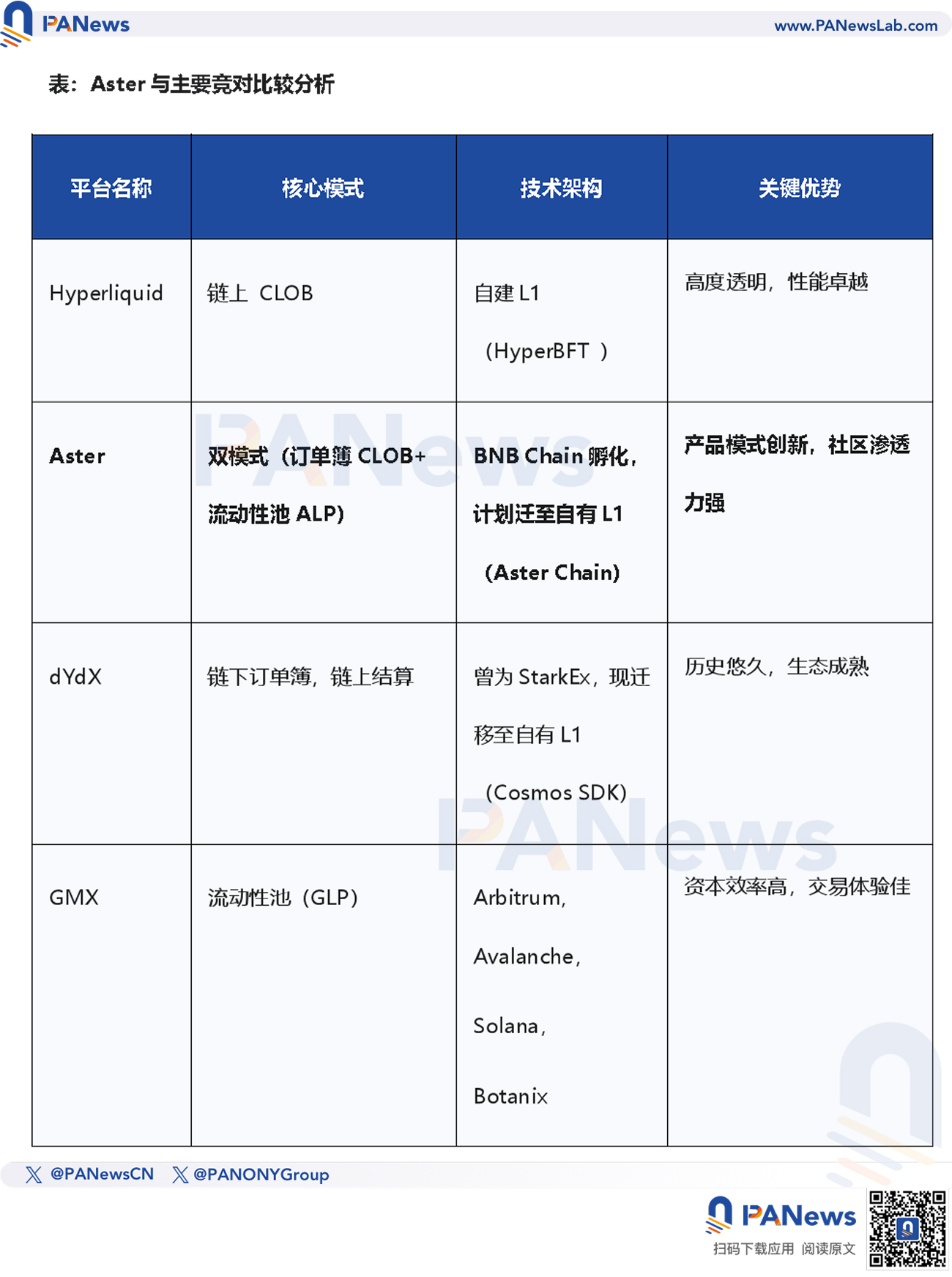
According to DeFiLlama data, Aster's TVL is nearly $670 million, including the locked amount of the native stablecoin USDF, multi-chain assets, and various liquidity pools. This phenomenon also reflects Aster's strategic height: its ambition is not only to rank among the top in the Perp DEX track but also to become a "one-stop" liquidity aggregation layer.
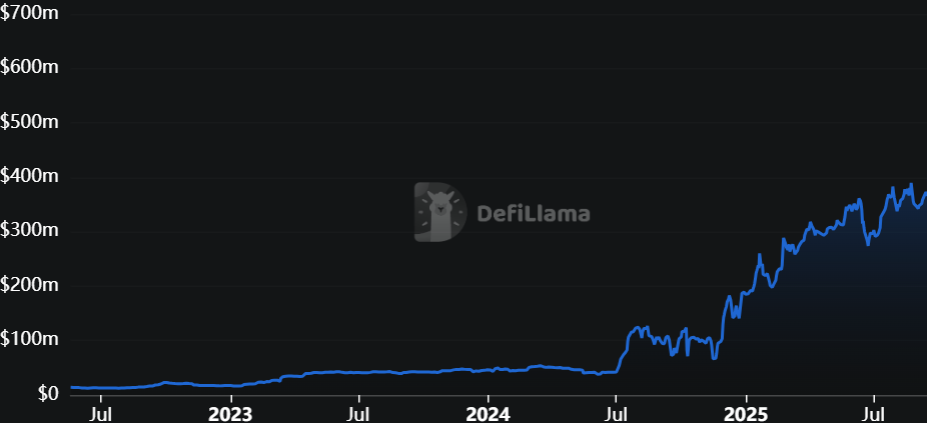
Product Innovation and Ecological Alliances
Inefficient capital is a common pain point faced by most DeFi protocols. Typically, when users open positions on Perp DEX, their margin is locked and cannot generate additional returns.
Aster addresses this issue with its groundbreaking design, allowing users to use liquid staking tokens (such as asBNB) and native yield stablecoins USDF directly as margin, meaning users can achieve "multiple benefits": earning staking rewards while also using yield-generating assets for leveraged trading. For example, users can earn ecological staking rewards with asBNB while using it as margin to open positions. Aster's extreme pursuit of capital efficiency unlocks another dimension of returns for traders.
As a delta-neutral yield stablecoin, USDF further anchors the TVL of BNB Chain. Aster has specially developed the Trade & Earn feature, encouraging users to use USDF as margin, providing a complete trading and wealth management loop. According to the platform's latest data, the deposit APY for USDF is 4.5%, and the APY for participating in trading activities using USDF is 12.2%, totaling up to 16.7%. Under the current market conditions, this yield is evidently very attractive. Theoretically, the more users trade, the higher their earnings, and the enhanced wealth effect also stimulates the steady growth of Aster's TVL.

This innovation once again echoes Aster's strategic positioning as the "liquidity layer" of the DeFi ecosystem, deeply integrating Perp DEX with LSD-Fi (liquid staking derivatives finance) and yield stablecoins, making itself a hub that provides deep liquidity and rich application scenarios for other protocols. Additionally, as a yield stablecoin, USDF generates income through delta-neutral positions, creating a new source of income for users and granting Aster autonomy over core infrastructure, further enhancing the independence and stability of its ecosystem.

Another unique feature of Aster is the 24/7 stock Perp, which allows users to trade on-chain derivatives of large-cap stocks in traditional financial markets (such as Nvidia and Tesla). This feature breaks free from the trading time limitations of traditional stock markets, providing more diverse trading targets for crypto-native users while also opening a portal for traditional financial users to engage in on-chain trading.
Aster brings traditional financial assets on-chain, paving a new path for the integration of the crypto market and traditional financial markets. However, this innovation, while harboring significant opportunities, also carries regulatory compliance risks, which pose potential challenges for Aster and all similar platforms in their future development.
During Aster's "incubation period" in the BNB Chain ecosystem, it has deeply penetrated the community through a series of strategic collaborations and formed strong alliances with other star projects. Aster's spot market partnered with the on-chain credit protocol Creditlink upon launch, becoming the only platform for claiming its CDL token airdrop, thereby establishing a close connection with the emerging on-chain credit track. Additionally, Aster has joined the token support program of Four.meme, providing traffic and channel support for Meme projects, and the three major project teams jointly held a trading competition.
Leveraging its position in the BNB Chain "headquarters," Aster has bundled the two most promising and community-engaging sub-tracks of on-chain credit and Meme culture, executing a "combination punch" to accurately capture traffic and users. Its deep community penetration and distribution strategy will also accumulate valuable user bases for future L1 migration.
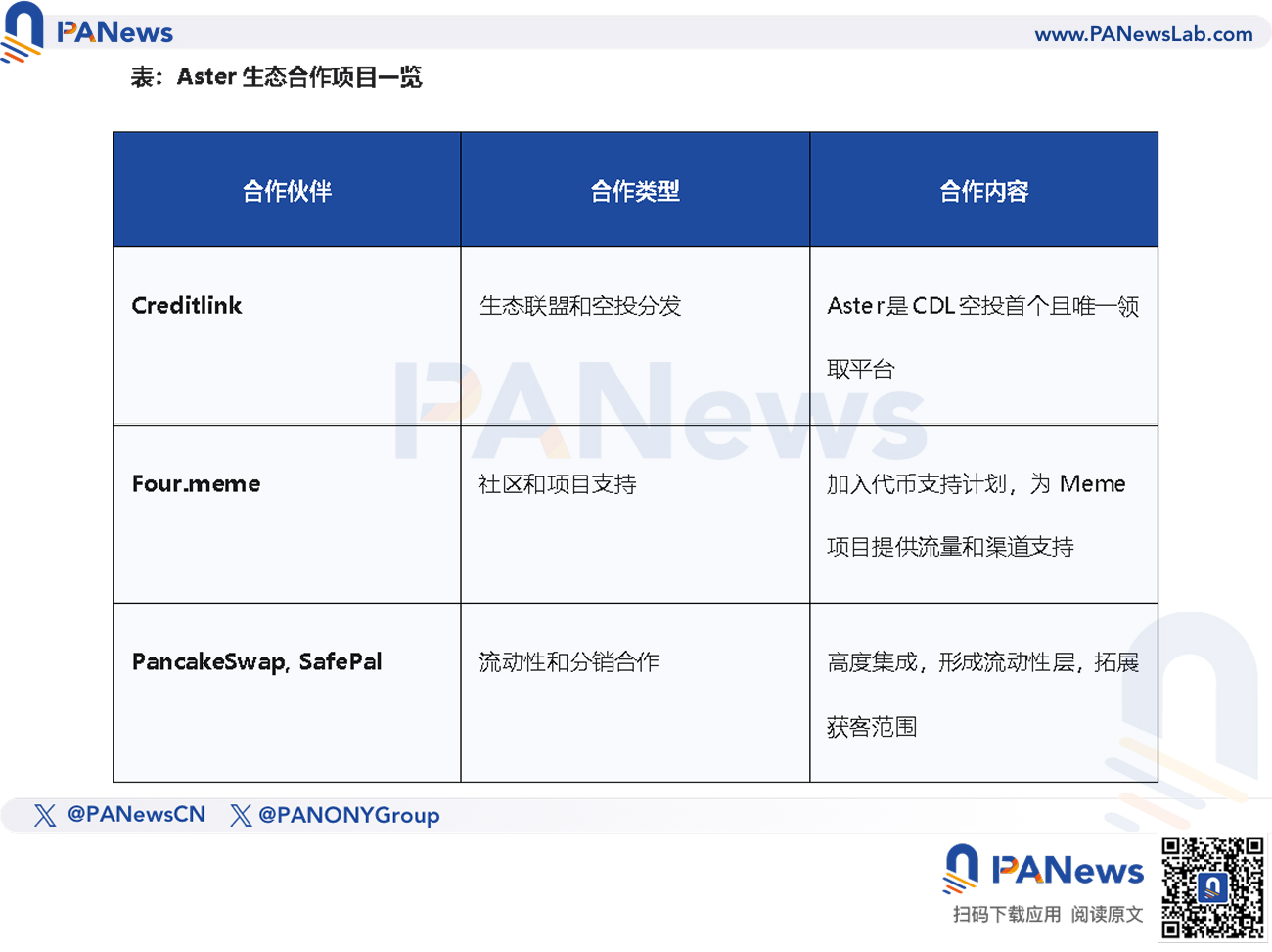
Successful TGE: Community First and Long-Term Development
Aster's TGE (Token Generation Event) was completed on September 17, with an impressive performance on the first day. Official on-chain data shows that within less than 24 hours of $ASTER's launch, total trading volume exceeded $340 million, with over 330,000 new independent wallet addresses created. The token opened at $0.03015, reaching a peak of $0.528 during trading, with a daily increase of approximately 2,154%.
Aster's token economic model demonstrates a strong commitment to the community. The team plans to allocate 53.5% of the token supply for community airdrops to reward early contributors and traders. Among these, as much as 8.8% (704 million tokens) will be airdropped to eligible users in the points activity on the same day.
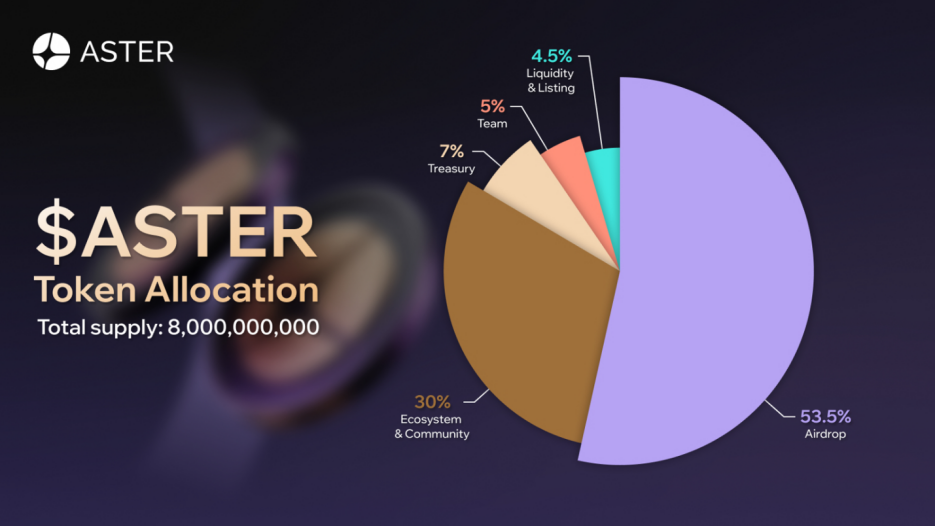
In an era of rampant airdrops, Aster CEO Leonard's statement "signal over spectacle" stands out, indicating that Aster aims to build an organic and sustainable community by rewarding "real participants." Aster's community-centric business philosophy may become the cornerstone supporting its L1 strategy. Large-scale airdrops are not only incentives but also key "economic elements" to attract users to migrate to Aster Chain, with the token serving as the "ticket" for L1 migration.
Although the Aster team is quite low-key, the background of its long-term supporters is not to be underestimated. Aster has received investment from YZi Labs, which spans multiple infrastructure and DeFi projects. The substantial support provided by investors during the incubation process in terms of funding, strategy, and resource networks is also crucial for its future development.
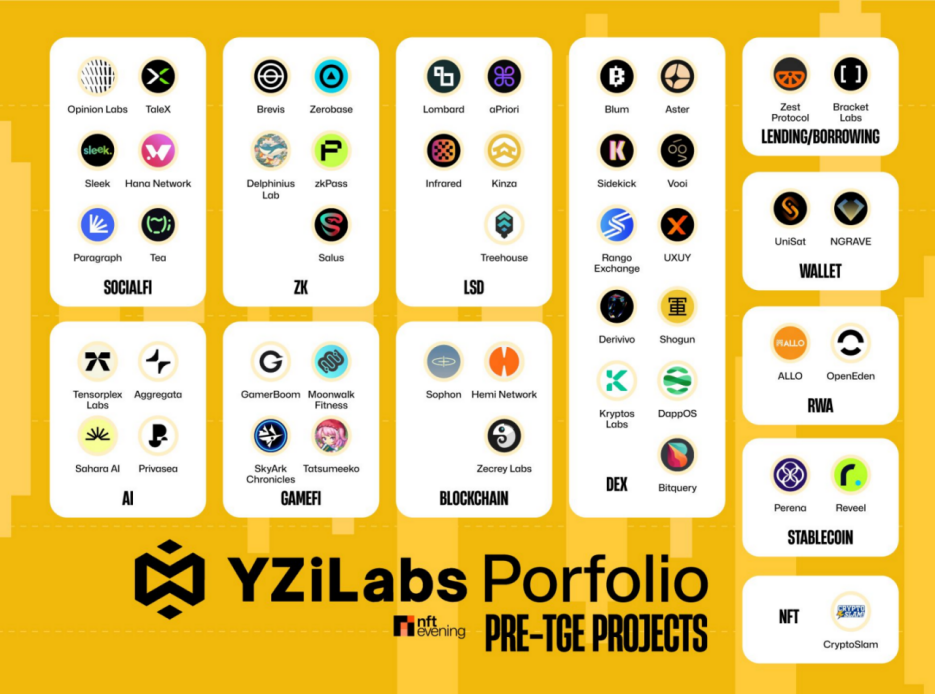
Aster's TGE may be the catalyst for its long-term strategy, with its clever GTM strategy, outstanding innovative capabilities, significant brand momentum, and strong ecological synergy collectively accumulating tremendous growth potential.
However, the other side of opportunity is challenge, and the biggest uncertainty currently lies in the L1 migration. If Aster Chain's performance, security, and user experience fail to meet expectations, or if the community splits due to migration, Aster's "Trojan Horse" strategy will face the risk of failure. Additionally, since Aster's product layout involves high-sensitivity assets such as yield stablecoins and stock Perp, investors and users need to pay close attention to its information disclosure matters and observe the balance between innovation and compliance in related businesses in the future.
Whether Aster can maintain its momentum in the increasingly competitive Perp DEX track, or even dethrone Hyperliquid, remains a question that time will answer. However, it is certain that it will deliver an impressive report to the DeFi community regarding strategy, products, and ecosystem.
免责声明:本文章仅代表作者个人观点,不代表本平台的立场和观点。本文章仅供信息分享,不构成对任何人的任何投资建议。用户与作者之间的任何争议,与本平台无关。如网页中刊载的文章或图片涉及侵权,请提供相关的权利证明和身份证明发送邮件到support@aicoin.com,本平台相关工作人员将会进行核查。




